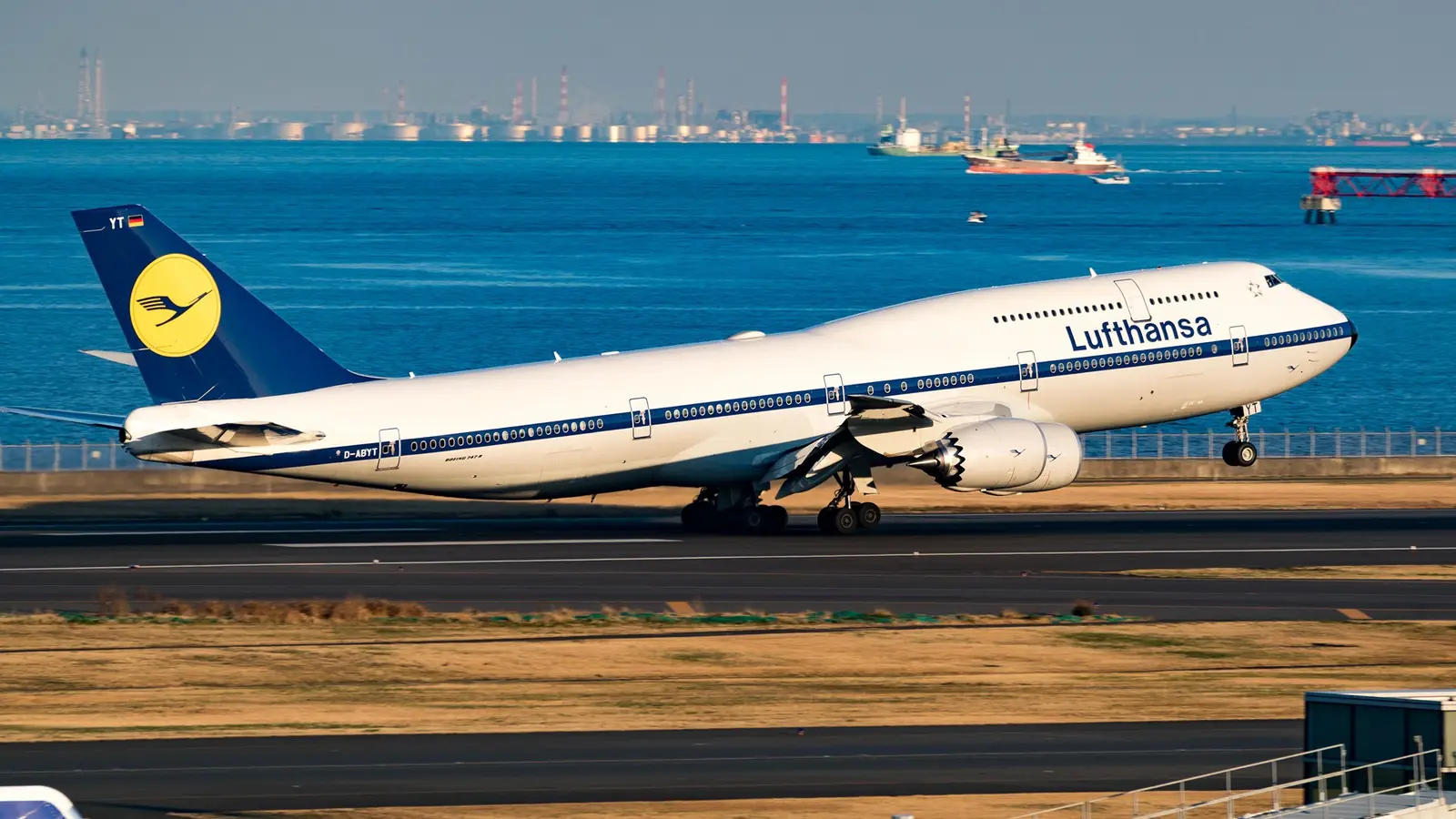
Boeing and Airbus have dominated commercial aviation for decades. The two manufacturers compete in every category, and that rivalry has always meant that whenever one side introduces a new program, the other is forced to respond. Indeed, it has produced some of the most significant aircraft in history, which shaped global fleets and today form the backbone of both short-haul and long-haul operations for carriers worldwide.
One of the clearest examples of this rivalry is the Boeing 747, which is the longest aircraft flying today. The jumbo jet was unlike anything seen before and quickly became the standard by which long-haul aircraft were measured. Its scale and influence later pushed Airbus to consider its own answer in the form of the A380. That competition continued across other categories in the years that followed.
The 747 Still Has Airbus Watching
However, the jumbo jet may still be a concern for the European manufacturer. You may wonder how an aircraft that is no longer in production can still have Airbus concerned, but there are a few explanations. Firstly, the global fleet is older than ever. According to the International Air Transport Association (IATA), the average age of aircraft stood at 14 years and 10 months at the end of 2024. That is more than a year older than the long-term average from 1990 onwards.
Deliveries, meanwhile, have not kept pace with demand. While 2018 saw a record 1,813 aircraft handed over, the figure for 2024 dropped to just 1,254, about 30% below expectations. The outlook for 2025 has also been revised down from 2,293 to 1,802, and further cuts are possible as Boeing and Airbus continue to struggle with supply chain pressures. This has led airlines to hold on to older jets for longer, particularly widebodies.
With the right maintenance, long-haul aircraft can remain in service for 25 to 30 years, often surpassing 100,000 flight hours or more than 20,000 cycles. For passenger fleets, that means the 747 still appears in limited numbers. Still, its larger impact today is on the cargo side, where operators continue to rely on its unmatched payload capacity. In both roles, the type’s longevity keeps it present in global fleets, which is a reminder that the European planemaker cannot entirely ignore it.
How The Last Jumbo Jet Became A Strategic Tool
However, age is not the only reason; another explanation lies in the strategy Boeing followed with the launch of the last variant of the jumbo jet, the 747-8. As explained by Coby Explanes in his YouTube video, by offering an updated jumbo, the US manufacturer ensured Airbus would face resistance just as it was trying to turn the A380 into a profitable product. This story began in the late 1990s, when Boeing approached Airbus with the idea of jointly studying a replacement for the 747.
For Airbus, the proposal gave new weight to its ambition of building a superjumbo. Yet even during the study, there were warning signs that the jet wouldn’t be viable. Only two airlines showed initial interest, and the Asian financial crisis further undermined demand forecasts in Asia, which both planemakers thought would be a key market for such an aircraft. Boeing ultimately withdrew from the project, but Airbus pressed ahead, and in 2000 its board gave final approval to the A380 program.
At the same time, Boeing was focusing on the mid-sized, highly efficient 787 Dreamliner, which would later transform long-haul travel. Alongside that effort, it also committed to developing the 747-8. The program launched in 2005, the same year the A380 entered service, and immediately provided an alternative for airlines that needed very large aircraft. Indeed, in a world where Boeing had not updated the 747, Airbus would have stood alone in the jumbo segment.
That would have made it easier to sell the A380 and less costly to defend its position. Instead, Airbus was forced to spend significant resources on keeping the double-decker competitive. Boeing probably knew the 747-8 would never be a bestseller, but it did not need to be. For them, the strategic benefit was clear: even with limited sales, the -8 constrained the European manufacturer at a time when it most needed flexibility.
With Airbus locked into defending the A380 while also advancing the A350 program, it had little room to create a true competitor to the 787. The result is visible in the market today. Airbus’s eventual response, the A330neo, entered service in 2018, seven years after the Dreamliner, and has secured only a fraction of the 787’s orders.
It does cover the same 250–300 seat segment, but lacks the composite structure and advanced systems that made the 787 such a leap forward. This explains why it might still be a concern for Airbus. The 747-8 worked as a strategic lever. The jet narrowed the A380’s path to profitability and tied up Airbus resources just as Boeing advanced the 787.
How The 747 Transformed Passenger And Cargo Aviation
Overall, the 747 proved to be one of a kind. It dominated the long-haul passenger market for decades, and today it remains central in cargo. When the jumbo jet entered service with Pan Am in January 1970, it was a game-changer. With four turbofans and the ability to carry close to 500 passengers in an all-economy layout, it transformed the economics of aviation. Airlines could consolidate travelers from smaller aircraft into one widebody, easing congestion at crowded hubs and opening up new opportunities for intercontinental travel.
The original 747-100 entered service with a range of 4,620 NM. As demand grew, Boeing quickly added variants: the 747-200 with extra range in 1971, the shortened 747SP for ultra-long-haul missions, and the 747-300 in 1980 with its stretched upper deck. By the late 1980s, the 747-400 arrived with new engines, modern avionics, and extended range, and went on to become the most popular version in the family.
But most notably, cargo became a defining strength of the program and continues to be. The first dedicated freighter, the 747-200F, joined Lufthansa in 1972, capable of lifting over 200,000 lb of freight across 5,000 miles. Later, Boeing introduced the 747-400F, which became the most widely used freighter model. Airlines such as China Airlines, Singapore Airlines, and Cargolux built large fleets around it, taking advantage of lower fuel burn and higher payload efficiency compared with earlier versions.
The final variant of the program came in 2011 with the arrival of the Boeing 747-8F. Boeing designed it with a shorter upper deck than its passenger counterpart, optimized for freight, and powered it with GEnx engines derived from the 787 Dreamliner. The result was a jet capable of hauling around 308,000 lb (140,000 kg) of cargo, accommodating 34 pallets on its main deck, and flying more than 4,000 NM. Major operators, including Cargolux, Nippon Cargo Airlines, Cathay Pacific, and UPS, have invested heavily, and today more than 100 remain in active service.
Notably, the freighters never faced a serious rival from Airbus. Although Airbus once considered an A380 freighter, the project was canceled before reaching production. FedEx had even expressed interest, but concerns over efficient cargo handling and the aircraft’s practicality ended the effort. That left the 747-8F with a clear field, and it continues to dominate heavy cargo markets today. According to Cirium data, freighter operators have scheduled more than 9,600 flights with the type this month alone.
Five Decades On, The Jumbo Jet Still Has Operators
According to ch-aviation data, over 350 examples remain in active service across passenger, cargo, and VIP fleets. The vast majority are freighters, with operators such as UPS, Atlas Air, Cargolux, Cathay Pacific, and FedEx relying on the type for high-capacity, long-haul routes. Passenger fleets, on the other hand, are far smaller today, as most airlines have retired the aircraft in favor of newer twinjets.
Lufthansa is by far the largest passenger operator, with 27 aircraft still flying, 19 747-8s and eight 747-400s. Strong demand for long-haul travel and delivery delays affecting both Boeing and Airbus have made it practical for the German carrier to keep the jumbo in service. Korean Air has taken a similar approach and continues to fly 16 aircraft across both passenger and cargo roles.
Elsewhere, a handful of airlines still maintain smaller fleets. Rossiya operates several examples due to restrictions following sanctions on Russia. Air China also continues to fly a few 747s, using them on select domestic routes where demand and capacity requirements make the aircraft suitable.
The Future Belongs To Twin-Engine Widebodies
Even though the 747 remains a familiar sight, production has now ended. The final aircraft, a 747-8F, was delivered to Atlas Air in 2023, marking the conclusion of a program that began in 1967 and resulted in the production of more than 1,500 airplanes over 54 years. Indeed, the type will always be remembered as the queen of the skies and a defining chapter in Boeing’s history. Today, however, global fleets are shaped by newer widebodies that offer far better efficiency.
Boeing’s 777 and 787 families, along with the Airbus A350, form the backbone of long-haul operations at many global airlines. Twin-engine economics have proven far more favorable than those of four-engine designs. By the time Boeing introduced the 747-8, most carriers had already transitioned to twin-engine aircraft for cost and performance reasons. Looking ahead, the US planemaker is betting on the 777X program to carry its legacy forward.
The family includes the long-range 777-8, the 777-8F freighter, and the stretched 777-9, which will become the longest passenger aircraft once it enters service. The program has faced persistent delays, but Boeing expects approval and first deliveries within the next year. Airbus, meanwhile, has gained significant traction with the A350, a long-haul twin that is already in widespread service and has also spawned a new freighter version, the A350F. Together, these aircraft are set to define the future, and as production normalizes, the remaining 747s will gradually give way to more efficient designs.
The Lasting Impact Of The 747 On Airbus And Boeing
That said, the 747 will always be remembered as the jet that reshaped long-haul travel. It was an engineering marvel that redefined what airlines and passengers expected from international aviation. For Airbus, it once represented a formidable challenge in the passenger market, and even today, its strength in cargo keeps it relevant. More importantly, Boeing’s strategic handling of the 747 program shaped how its rival allocated its resources.
The decision to update the jumbo with the 747-8 may not have produced huge sales, but it disrupted the European planemaker at a critical moment. By placing pressure on the A380 while moving full speed on the 787, Boeing secured an advantage that Airbus struggled to match. That imbalance is visible today in the wide gap between Dreamliner and A330neo orders.
At the same time, the 747’s freighter dominance shows why Airbus has remained on the defensive. With no direct competitor, the type still rules heavy cargo, and the arrival of the 747-8F only cemented that position. Even now, with the A350F finally coming, Boeing’s head start is clear.
Taken together, the story of the 747 is not just about an iconic airliner but about how it shaped the rivalry between the world’s two largest manufacturers. Boeing used it to establish a strong foothold in the long-haul market, and its influence can still be seen today.



